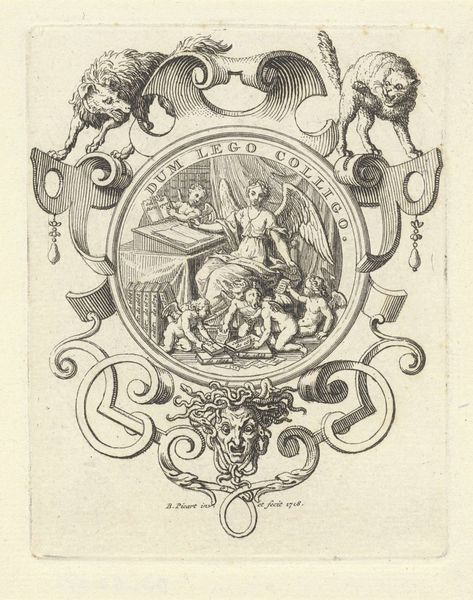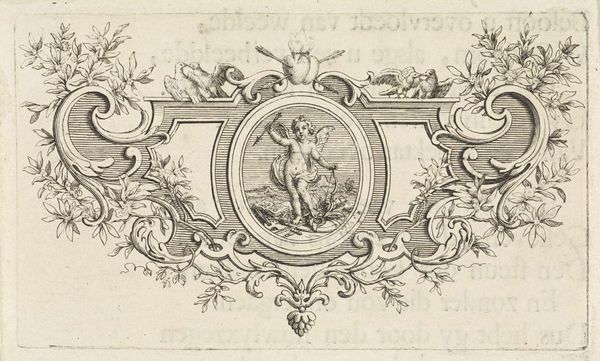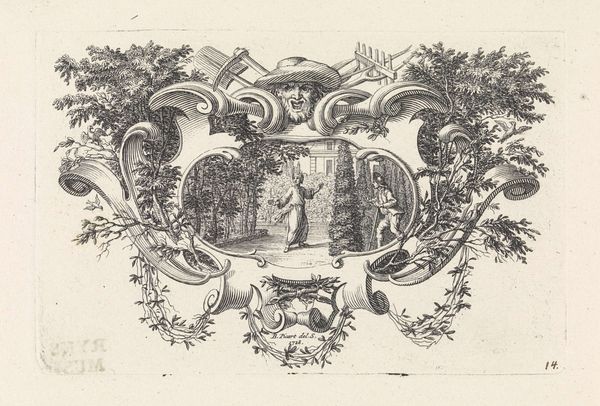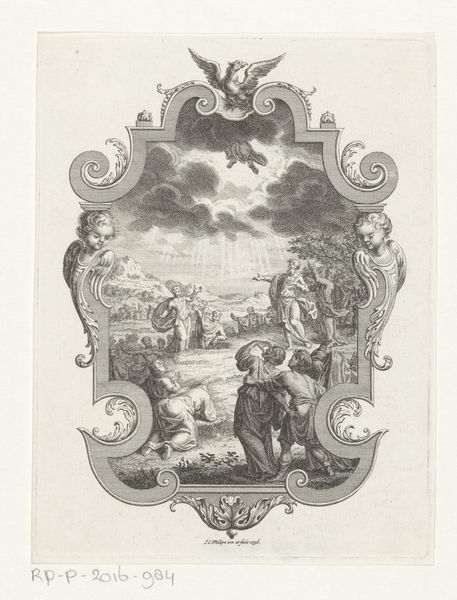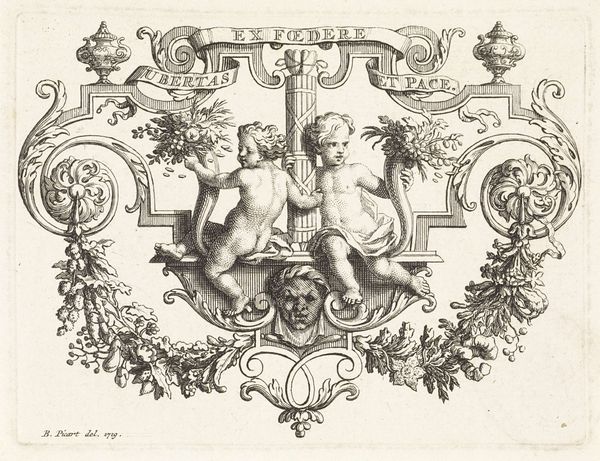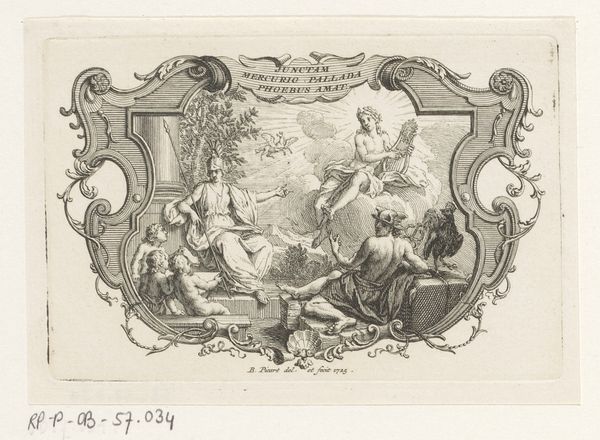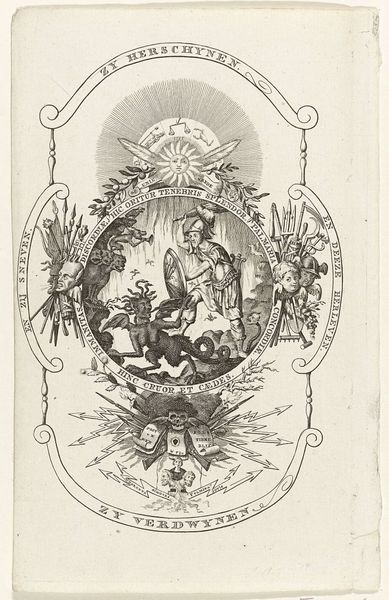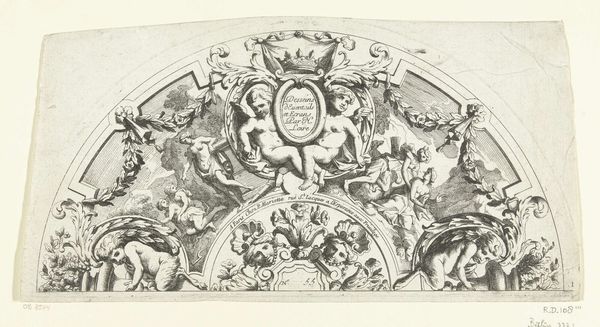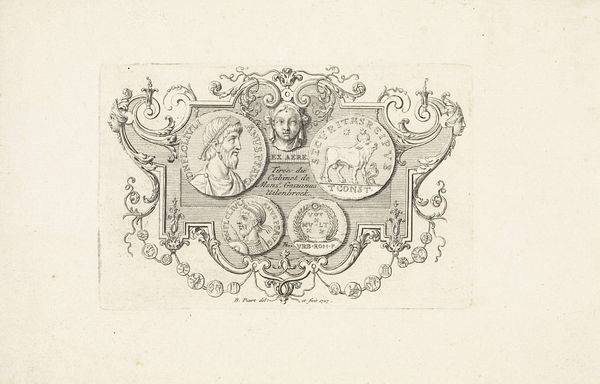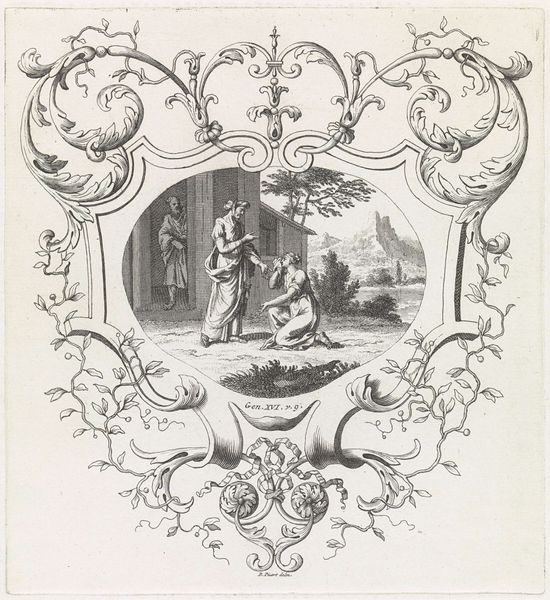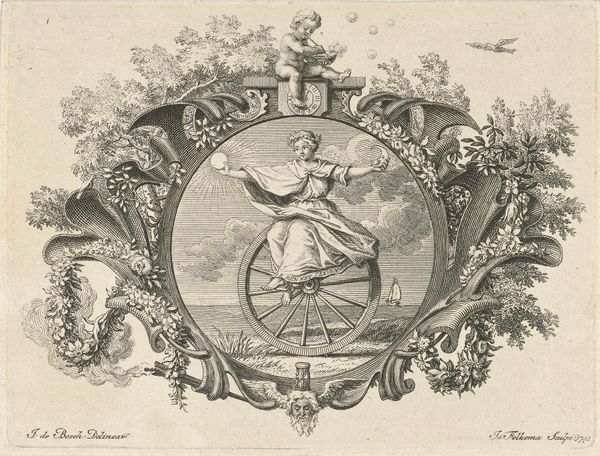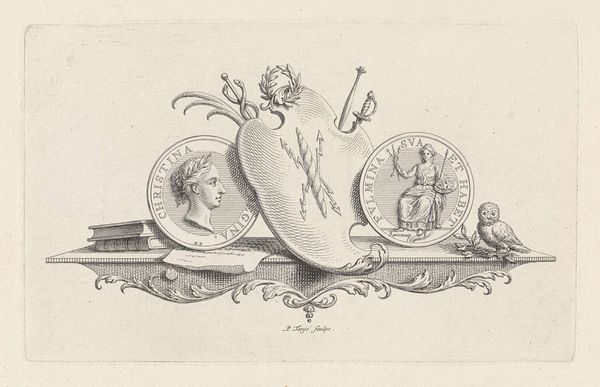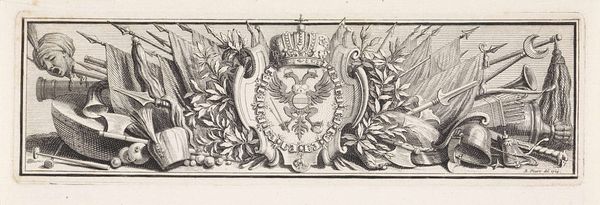
print, etching, ink, engraving
#
allegory
#
baroque
#
pen drawing
# print
#
etching
#
figuration
#
ink line art
#
ink
#
line
#
history-painting
#
engraving
Dimensions: height 105 mm, width 131 mm
Copyright: Rijks Museum: Open Domain
Curator: Welcome. We're looking at "Mildheid en Rechtvaardigheid overwinnen Kwaad," an etching with engraving and etching in ink by Bernard Picart, created around 1718. Editor: My initial reaction? This work has a stark, graphic quality, all sharp lines and contrasts. The composition is so ornate it borders on the excessive—typical baroque! Curator: The piece is heavy with symbolism, reflecting the period’s fascination with allegorical representation. We see personifications of Mildness and Justice actively subduing Evil, highlighting themes of moral order. The inscription around the central image emphasizes tempering anger with fairness. What can it tell us about its place in early 18th-century Dutch culture? Editor: Well, structurally speaking, the use of line dictates everything. The circular composition centers on that conflict, reinforcing it. The lines of the figures are precise, while the swirling baroque ornamentation adds to the drama. Note how those ferocious lions seem balanced precariously on the frame’s edge. Curator: Indeed! The entire construction presents an aspirational vision— the triumph of enlightenment values over baser instincts. We should remember, too, the context in which Picart was working: he belonged to a Huguenot family, and the piece subtly advances ideas about tolerance and righteous governance during a turbulent time for religious minorities in Europe. The small inscription at the bottom about suppressing spirits perhaps implies society needed this constant reinforcement against inner demons as much as the external foes. Editor: The print relies on established visual cues. The scales of justice, the serpent crushed underfoot — Picart uses a language anyone in his era would immediately understand, a series of recognizable formal signs creating that narrative. This is a very persuasive example of period understanding via easily interpreted structural representation. Curator: Absolutely. This piece underscores the vital role art can play in shaping—and reflecting—cultural values and power dynamics. Its seemingly straightforward allegory touches on far deeper social anxieties, if we contextualize it carefully. Editor: I am struck, as always, how much an era’s dominant mode of representation mirrors its underlying ideological preoccupations, making even seemingly small prints invaluable windows onto other historical realities.
Comments
No comments
Be the first to comment and join the conversation on the ultimate creative platform.
